The Evolution of Continuous Insulation
Optimum Insulation
The other important driver for CI becoming more mainstream as a building practice was economics and the concept of “optimum insulation.”
Although it requires an initial increased investment during construction, insulation creates reduced energy costs for the life of the building. The question then becomes, “how much insulation is enough?” “What is the optimum amount of insulation?”
“Optimum insulation” is the amount of insulation that has the lowest life cycle cost (LCC). LCC is expressed as:
LCC = FC+M+R+E – RV
LCC = Life Cycle Cost ($)
FC = First Cost ($)
M = Maintenance and repair cost ($)
R = Replacement Cost ($)
E = Energy Cost ($)
RV = Resale value or salvage ($)
The concept of determining the lowest life cycle cost (LCC) is illustrated in Figure 2.
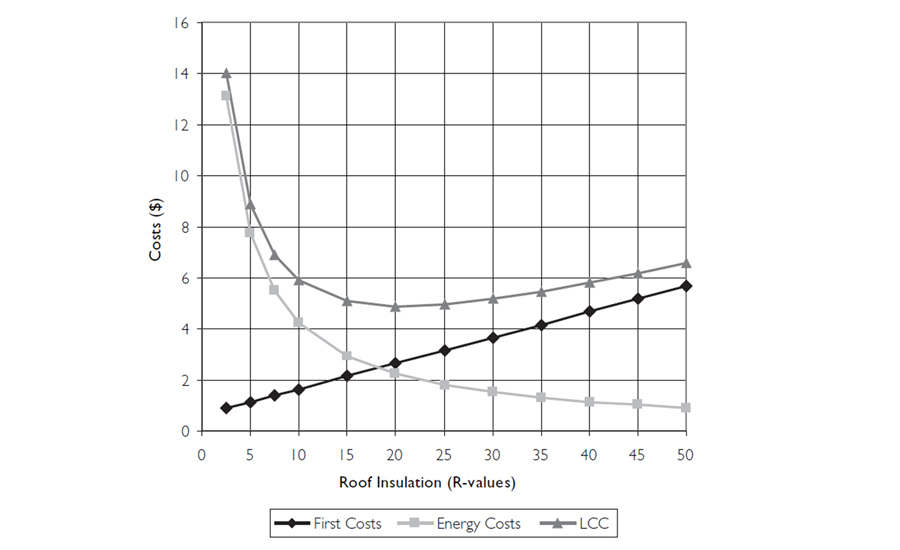
Figure 2: Life Cycle Cost Analysis
In addition to adhering to the public policy principles of the 2030 Challenge and the MOU with DOE, the ASHRAE 90.1 standard committee also justifies insulation levels using sound economic principles.
Figure 2 illustrates the concept showing first cost for insulation/construction increasing as R-value increases. The principle is obvious, as one installs more insulation, the first cost of insulation increases. Equally obvious it captures energy cost and consumption decreasing as R-value increases.
The LCC is the lowest sum of “first cost” and “energy cost” at a given level of R-value. In this hypothetical example, R-20 is the lowest LCC, and, is therefore the “optimum insulation” level. Figure 2 only demonstrates the concept of “optimum insulation.”
Actual optimum levels must be calculated for specific climates, specific building construction types, specific building usage patterns and specific economic assumptions regarding construction and energy costs. The concept of Life Cycle Cost Analysis and Optimum Insulation are utilized by ASHRAE in the development of Standard 90.1 however it is a minimum standard that sometimes lags behind the upward trend of energy and construction costs, particularly when a building built today will have a useful life several decades into the future. Therefore, the path to raising awareness and increasing energy standards to include the use of CI was aligned with economic and public policy through the early 2000’s.
Performance Benefits Resulting From the Use of CI
The location of continuous insulation is determined by the type of construction, climate zone, building function and ease of construction. CI may be integrated as part of many common wall designs including steel framed and masonry cavity walls, rainscreens and rain barriers, pre-cast and tilt-up concrete panels. It can also be incorporated behind many types of cladding including architectural metal, masonry, stucco and EIFS. Generally, it is easiest to construct continuous insulation on the outboard side of the wall framing to minimize complex detailing around floor lines, exterior penetrations and openings.
When located on the outboard side of the wall, CI achieves two things: 1) it keeps the wall framing warmer, meaning it is closer to the building’s interior temperature, and, 2) the added CI R-value shifts the dew point, to the point that it often is located outside of the framing cavity insulation. Minimizing condensation inside walls reduces the likelihood of moisture accumulation which decreases the possibility of structural corrosion and decay and the opportunity for mold and mildew to develop.
Unfortunately, structural components (concrete masonry units, steel studs, wood studs and concrete) are better conductors than insulators. This results in thermal bridging or thermal short circuits where structural (and other) components penetrate the through the wall to the exterior.
Prior to the wide spread adoption of CI conventional construction practices, insulation was commonly installed between studs, in the stud cavity, in an exterior wall. Thermal imaging shown in Figure 3 shows increased heat flow where uninsulated steel stud framing meets the exterior sheathing and other uninsulated details along the roof line, while Figure 4 shows a building known to have CI over its steel framing and showing greatly reduced thermal bridging in the wall system compared to Figure 3.
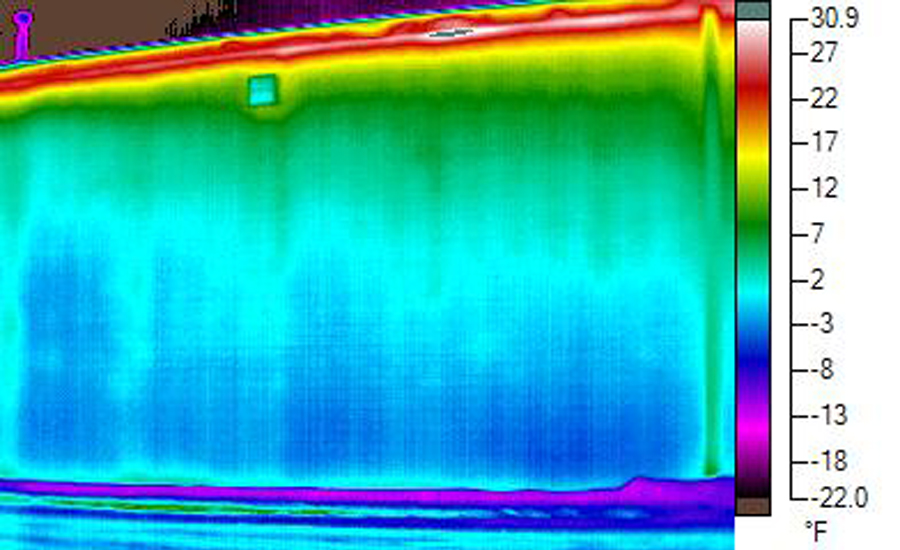
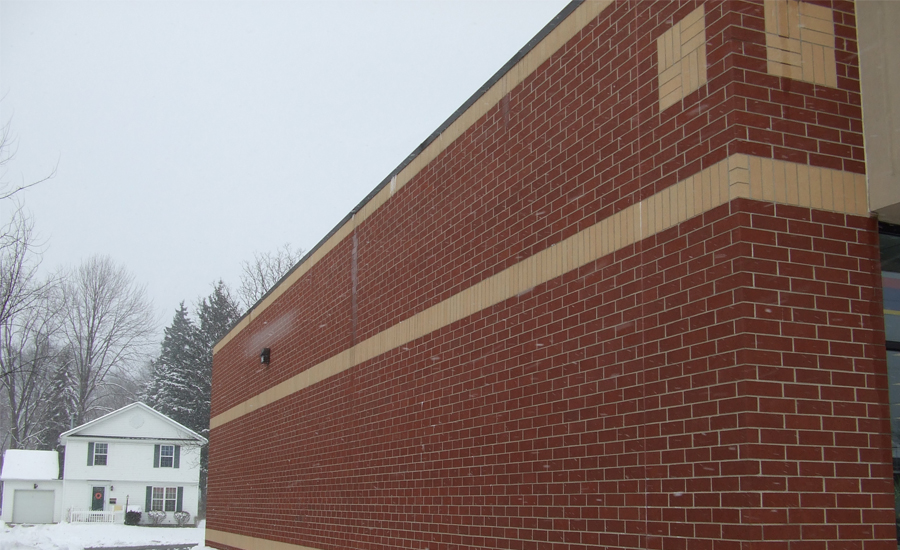
Figure 3: Thermal Imaging of a Building with Cavity Insulation, but No CI
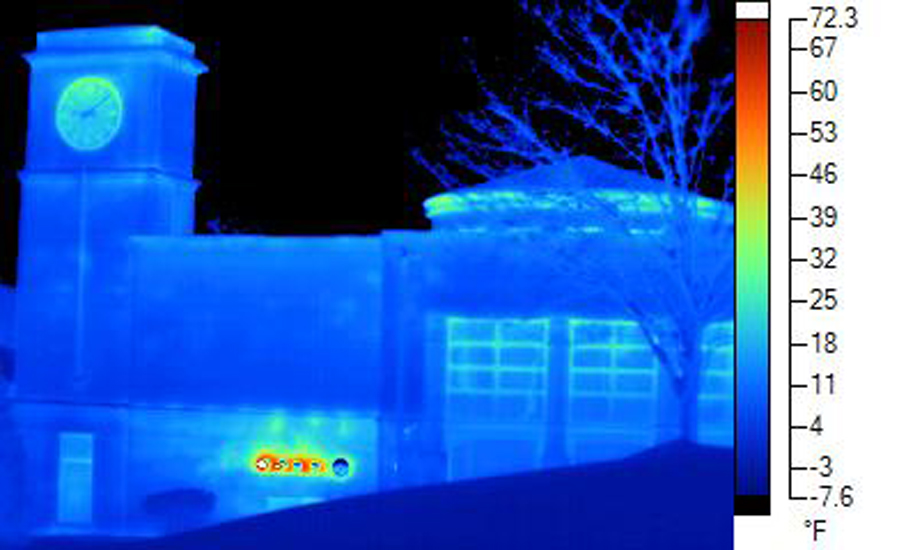
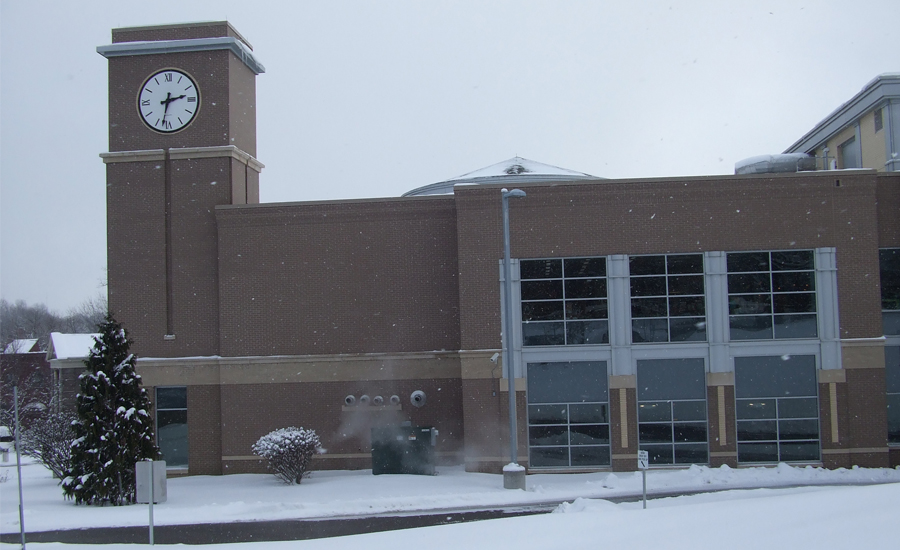
Figure 4: Thermal Imaging of a Building with Cavity Insulation, And CI
Thermal bridging reduces the effective R-value of the wall assembly by a percentage of area where stud framing is not separated from the exterior by CI. When CI is provided over the stud framing the effective R-value of the wall is improved.
By minimizing thermal bridging CI can make the enclosure wall more energy efficient and less likely to experience detrimental condensation related problems.
CI also helps manage the potential for moisture accumulation via the diffusion of water vapor through the wall at the molecular level. However, if a high quality air barrier is not present in the wall design, it is very likely that more moisture related problems may occur due to the leakage of moisture laden air than will occur from molecular diffusion. For effective enclosure wall system performance, both CI and water resistive air barriers must be carefully chosen and installed based on the demands of the climate zone, the use of the building, and the type of wall system construction.
Changes in Building Codes Because of the Use of CI
Perhaps the most prominent change in building codes resulting from the increased use of CI is a reawakening of NFPA 285.
NFPA 285 is a fire test standard that measures the likelihood that a wall system containing combustible components may be ignited by a fire plume emitting from a window opening, and then propagate the fire away from the point of origin either on the surface of the wall or through its core and cavities. Although it was never intended to be a test exclusively for EIFS, NFPA was largely viewed as a test for EIFS, and was not often utilized to evaluate other types of cladding or construction.
The wide spread adoption of the IBC and the rise of CI in energy standards happened to coincide in the early 2000’s. During this time, it was more common for walls that are required by the IBC to be made of noncombustible components. Walls were also required by the energy standard to be wrapped in CI, which is often, not always, a combustible foam plastic. In other words, new buildings were often required to be non-combustible construction, yet also required to be wrapped in combustible CI materials.
NFPA 285 is often required when combustible air/water barriers are used or when foam plastic insulation is used in the exterior walls of construction types I, II, III or IV. These construction types, by code definition, have exterior walls constructed of non-combustible materials.
The test standard NFPA 285 is referenced in many sections of the IBC including 1403.5 for water resistive barriers, and Section 2603.5.5 for foam plastic insulation. The now defunct ICBO Uniform Building Code first included the concept in the 1988 edition, requiring testing in accordance with the UBC Standard 17-6, a predecessor of NFPA 285. The other two national model building codes of that era also required full scale testing for exterior walls. The 1982 SBCCI Standard, and the 1984 BOCA National (Basic) Building Codes stated in their foam plastics chapters:
“Results of diversified or full scale fire tests reflecting an end use condition shall be submitted to the building official demonstrating that the (wall) assembly in its final form does not show any tendency to propagate flame over the surface or through the core when exposed on the exterior face to a fire source.” The intent was that a predecessor of NFPA 285 be utilized, the “Full Scale Multi-Story Test,” as it was called at the time.
It wasn’t until the rise of CI in the late 2000’s that NFPA 285 became a widely enforced test requirement. That is why many architects in the 2008-2010 time frame were caught unaware that their new designs including CI needed to be NFPA 285 compliant.









